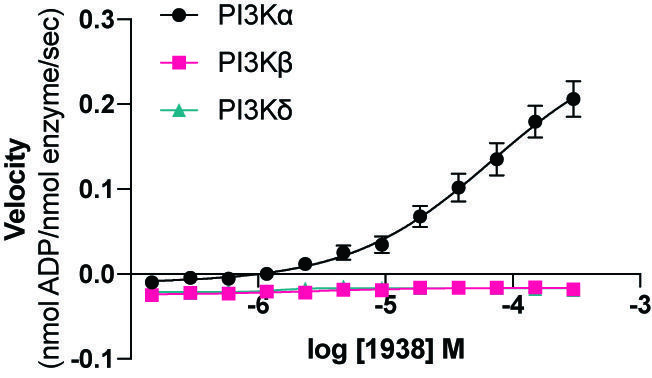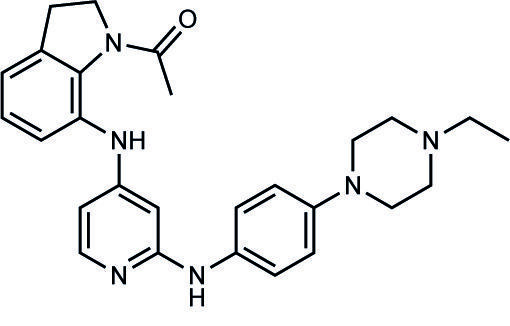Cat. #161068
UCL-TRO-1938 PI3Ka activator
Cat. #: 161068
Unit size: 5mg
Availability: 3-4 weeks
Application: Signal transduction in a broad range of mammalian cells (human/rat/mouse)
£250.00
This fee is applicable only for non-profit organisations. If you are a for-profit organisation or a researcher working on commercially-sponsored academic research, you will need to contact our licensing team for a commercial use license.
Contributor
Inventor: Bart Vanhaesebroeck
Institute: University College London
Primary Citation: Gong GQ et al. A small-molecule PI3Kα activator for cardioprotection and neuroregeneration. 2023. Nature. 618(7963):159-168. PMID: 37225977.
Tool Details
*FOR RESEARCH USE ONLY (for other uses, please contact the licensing team)
- Tool name: UCL-TRO-1938 PI3Ka activator
- Alternate name: 1938
- Research fields: Cell signaling and signal transduction
- Chemical name: 1-(7-((2-((4-(4-ethylpiperazin-1-yl)phenyl)amino )pyridin-4-yl)amino )indolin-1-yl)ethan- 1-one
- Tool type ecom: Small Molecule
- Primary target: PI3Kalpha - PIK3CA - phosphoinositide 3-kinase alpha - Phosphatidylinositol-4,5-Bisphosphate 3-Kinase Catalytic Subunit Alpha
- Description: The PI3K signalling pathway plays a central role in tumour progression, and its inhibition has been a key focus for therapeutic applications and advances in cancer research. UCL-TRO-1938, specifically stimulates the activity of the PI3Kalpha isoform – an effector of growth factor signalling. 1938 selectively activates PI3Kalpha with minimal effects on other PI3Kalpha isoforms and kinases tested. 1938 allosterically activates PI3Kalpha through a mechanism distinct from physiological activators and induces transient activation of PI3Kalpha signalling in rodent and human cells.
- Application: Signal transduction in a broad range of mammalian cells (human/rat/mouse)
- Purpose: Tool compound to probe for PI3Ka activity in cells and tissues
- Selectivity: No activity on all other PI3K and PIKK isoforms tested - no relevant inhibition of kinases as determined by a kinase profiling screen (ThermoFischer).
- Molecular weight: 456.59
- Solubility: Soluble in DMSO, Max conc. 10 mM
- Additional notes: Use in cells at 1-10 uM (see Gong et al. Nature). Do not use at concentrations above 10 uM for cell-based assays longer than 24h.
Handling
- Format: Dry
- Purity: 0.9965
- Storage conditions: Powder can be stored at room temperature - store aliquots of 10 mM stock dissoved in DMSO at -20C for shorter time (3 month) longer storage is recommended at -80C
- Shipping conditions: 5mg dry powder shipped at room temperature
Target Details
- Primary target: PI3Kalpha - PIK3CA - phosphoinositide 3-kinase alpha - Phosphatidylinositol-4,5-Bisphosphate 3-Kinase Catalytic Subunit Alpha
- Ec50 on primary target: 5 uM (based on PIP3 production as measured by PIP3 lipid production in cells by mass spectrometry); 2-4 uM (based on pAkt production in cells); 0.5 uM (based on ATP content in MEFs, using CellTiter-Glo, after 24h)
Application Details
- Application: Signal transduction in a broad range of mammalian cells (human/rat/mouse)
References
- Gong GQ et al. A small-molecule PI3Kα activator for cardioprotection and neuroregeneration. 2023. Nature. 618(7963):159-168. PMID: 37225977
- Kingwell K. PI3K activator taps route to regeneration. Nat Rev Drug Discov. 2023 Jul 22(7):537. PMID: 37291416.





